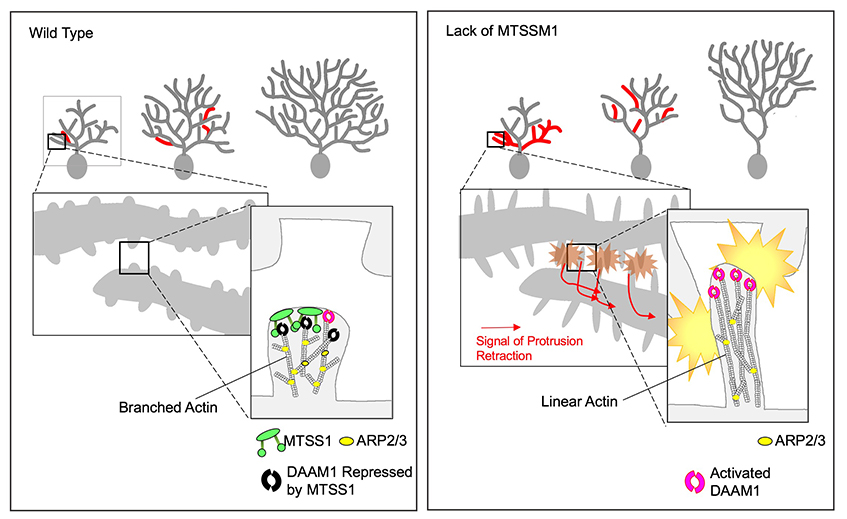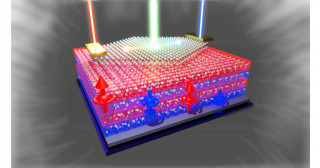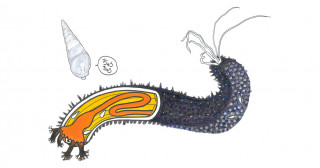New research shows how one protein helps manage the complex branching of nerve cells in the brain.
A protein called ‘metastasis Metastasis suppressor-1’ (MTSS1) activates one pathway and inhibits a competing one, thus playing a dual role that determines how nerve cell protrusions, called dendrites, branch in the brain, according to research published in the journal Cell Reports .
Researchers at the Institute for Integrated Cell-Material Sciences (iCeMS) and colleagues in Japan wanted to investigate the role of MTSS1 in the development of branching dendrites in Purkinje cells.
These nerve cells are among the most complicated in the human brain, occupying the outer layer of the cerebellum, which is located at the brain’s base. They are comprised of a large body and an intricate tree-shaped portion formed of branching dendrites. Dendrites grow to completely fill the available space in order to uniformly receive information from the surrounding environment. But they also retract if they come into contact with other dendrites. This process allows nerve cells to control dendrite growth so they can cover the maximum area possible while minimizing inefficient redundancies.
Previous studies have shown that MTSS1 may be involved in Purkinje dendrite development, but the details of how it is involved were lacking.
Professor Mineko Kengaku is a developmental neurobiologist whose work aims to understand the dynamic movements of developing nerve cells in the brain. By reconstructing the cell architecture of the brain in petri dishes, Kengaku believes she and her team can help in the development of therapies for damaged brains.
Kengaku and her team found that inhibiting MTSS1 expression in Purkinje cells in baby mice led to incomplete growth of their dendrites, indicating that MTSS1 is an important regulator of their development. Computer simulations showed similar results.
Upon further investigation, they found that MTSS1 regulates actin, the protein that forms the skeletal basis of dendrites, by two competing pathways. They showed that, in Purkinje cells, MTSS1 activates a pathway called ARP2/3, which initiates the growth of new actin filaments at a 70° angle from the ‘mother filament’. MTSS1 also binds to and inhibits a protein, called DAAM1, which forms straight non-branching actin filaments, and is thought to compete with ARP2/3. Inhibiting MTSS1 was found to stimulate the growth of dendrites until they contact neighbouring ones, causing them to retract. This is the first time MTSS1 has been identified as a DAAM1 inhibitor in vertebrate nerve cells.

Inhibiting MTSS1 expression in Purkinje cells in baby mice led to incomplete growth of Purkinje branches (Kyoto University iCeMS)
Paper information
【DOI】 https://doi.org/10.1016/j.celrep.2018.06.013
【KURENAI ACCESS URL】 http://hdl.handle.net/2433/232641
Kelly Kawabata Galbraith, Kazuto Fujishima, Hiroaki Mizuno, Sung-Jin Lee, Takeshi Uemura, Kenji Sakimura, Masayoshi Mishina, Naoki Watanabe, Mineko Kengaku (2018). MTSS1 Regulation of Actin-Nucleating Formin DAAM1 in Dendritic Filopodia Determines Final Dendritic Configuration of Purkinje Cells. Cell Reports, 24, 95-106.





